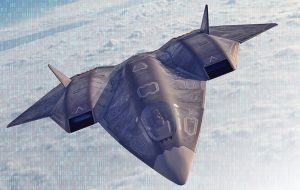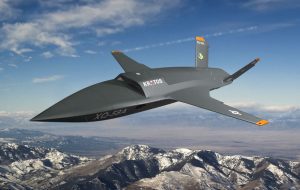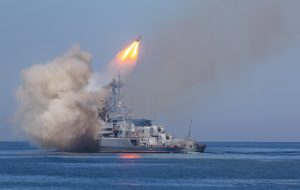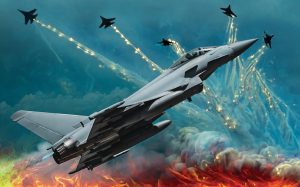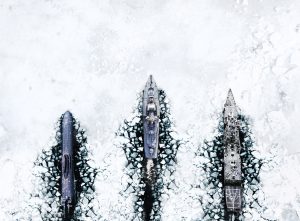The Russian war on Ukraine raging since late February (February 24, 2022), produced many geostrategic repercussions that are expected to have a clear impact on the future of relations between the major powers at the forefront of the current world order, as well as the checks and balances of international power in general, and military ones in particular, depending on the outcome of the ongoing war.

Members of the armed forces of the separatist self-proclaimed Donetsk People’s Republic drive a tank on the outskirts of Donetsk January 22, 2015. REUTERS/Alexander Ermochenko (UKRAINE – Tags: CIVIL UNREST MILITARY POLITICS CONFLICT TPX IMAGES OF THE DAY) – RTR4MHW8
Despite the ambiguity of the current military and geostrategic scene in light of the continuation of the war and the lack of clarity on the path it could take, the repercussions that this war has and will produce, indicate that there are important changes that will affect the nature of the existing military balances, both on the European and the global levels, which can be clarified through the following two axes:
A. The military implications of the Russian-Ukrainian war:
The military operations carried out by Russia in the Ukrainian territory, and the Western reaction (American and European support for Ukraine in this war) towards them reveal a set of indications and military results that this war has produced so far, the most prominent of which are the following:
1- Refocus on the tools of conventional warfare: Over several decades, there has been a recession in the idea of direct military wars as a source of threat to European security in particular and global security in general, in favor of more focus on concepts such as human security and health security after the Covid-19 pandemic, and more attention to modern war patterns which goes by many names including 5th generation and 6th generation wars among others.
However, the Ukrainian war brought back the focus to military threats and conventional wars with all their tools.
In contrast to the 2014 Crimean War, in which Russia employed hybrid warfare methods, by supporting some separatist groups loyal to it and carrying out hidden or undeniable activities to foment unrest in eastern Ukraine by relying on the Russian-speaking communities in these regions and propaganda methods, in parallel with The use of conventional military force to support these separatist movements that resulted in the Russian annexation of the Crimea and the separatists’ success in controlling large areas in the Donetsk and Luhansk regions, and the announcement of the formation of the Donetsk People’s Republic and the Lugansk People’s Republic on the border with Russia.
The current war in Ukraine relied mainly on the use of Conventional military power tools, with Russia mobilizing more than 150,000 soldiers around Ukraine, in addition to combat units, logistical units, and units for other tasks, as well as the use of tactical, operational and strategic methods of deception, which did not prevent the western side from anticipating and preparing for the war.
For its part, Washington has repeatedly warned that Russia could invade Ukraine “at any time” and even set a specific date for that (February 16), and Moscow launched the invasion a week later.
However, the war saw the use of a lot of means of modern warfare, including the use of smart weapons and cyber-attacks, especially “DDos” (distributed denial of services) attacks aimed at flooding websites with intense fake traffic, preventing them from communicating in the usual way, and other methods adopted in modern wars, but the nature of military war remained traditional, based on the use of ground, sea and air forces, mobilization of forces and other tools of traditional wars.

2- Refocus on nuclear deterrent weapons: The Russian war against Ukraine was accompanied by a series of developments that brought the nuclear file, and its peaceful and military uses, back into global focus in a way that had not happened since the end of the Cold War. A week before the war, Moscow conducted exercises to test the control operations of nuclear weapons and highly dangerous weapons, which included simulating the use of nuclear weapons, and according to Russian Defense Minister, Sergei Shoigu, these exercises were planned in advance.
A few days later, Russian President Vladimir Putin accused Ukraine of developing nuclear weapons, indicating that it still possesses Soviet nuclear technologies and delivery systems for such weapons.
When the invasion began, Putin warned that any outside country standing in Russia’s way would face “consequences the likes of which it has never seen in its entire history,” a threat of nuclear proportions.
The matter reached its climax with Putin’s announcement, on February 28, 2022, that his country’s strategic nuclear deterrent forces were placed on high alert, for the first time since the Cold War, and there were increasing talks about the possibility of Russia using tactical nuclear weapons in the war, either for a show of force or to resolve the war and bring it out of the current stalemate.
These tactical nuclear weapons, of which Russia is believed to possess about two thousand, include bomblets and warheads that can be placed on different types of missiles that are usually used to transport conventional explosives, and can even be launched as artillery shells on the battlefield, or by planes and warships.
These insinuations and threats, direct or indirect by Russia of the possibility of using nuclear weapons when necessary, as well as the Ukrainian President “Vlodimir Zelensky” hinting in his speech before the Munich Security Conference, on February 19, 2022, at the possibility of abandoning the Budapest Memorandum that organized its abandonment of nuclear weapons, and then its accession to the Nuclear Non-Proliferation Treaty, meaning Ukraine could work on possessing a nuclear weapon, now that its international commitments didn’t protect the unity, integrity, and sovereignty of the Ukrainian territory.
In addition, major Western countries warned Russia against the use of nuclear weapons in the conflict emphasizing its readiness to respond, all of this has not only shined a spot-light on nuclear deterrent weapons on the global stage, but will have dangerous future effects on non-proliferation issues in general, pushing more countries to seek nuclear weapons, either for protection against aggression or to strengthen the elements of their strategic power, which enhances the chances of the world heading towards a new nuclear arms race, at a time when estimates already indicate that the number of nuclear warheads in global military stockpiles, which includes nuclear warheads designated for operational forces, is increasing again.
According to estimates by the US Department of Defense, it is possible that China will have a thousand nuclear bombs by 2030, and that North Korea will build up to 60 nuclear weapons.
The war also made clear that Europe’s heavy dependence on oil and natural gas supplies coming from Russia constitutes a major weakness in its security system, which may push it to search for alternative energy sources, including reconsidering plans to increase the use of peaceful nuclear energy.
This could lead to an expansion in the field of peaceful nuclear energy uses globally, and the possibility of increasing the chances of other international and regional parties entering the circle of nuclear weapons capability.
This isn’t limited to nuclear weapons. One of the important results of the Russian-Ukrainian war so far is the push towards increasing the levels of military spending and the levels of conventional armaments at the global level in general, and within Europe in particular, as will be explained later.
3- Refocus on military alliances: The Russian-Ukrainian war underlined the importance of the traditional military alliances of large and small countries alike, and restored the momentum to the North Atlantic Treaty Organization (NATO), after many years of the alliance facing doubts about the feasibility of its continuity, after the disappearance of the enemy (the Former Soviet Union) that it was founded to confront.
Germany was among the countries that called for the dissolution and dismantling of the alliance, while French President Emmanuel Macron stated in 2019 that the alliance had entered a “brain death state”, despite the success of the United States in creating new strategic concepts for the alliance, through which he was able to work on new areas and issues such as terrorism and regional crises outside Europe, such as Libya, Iraq, and others.
Although NATO did not intervene directly in the Russian-Ukrainian war, its role was decisive in preventing the expansion of the war into the borders of the member states of the alliance, especially the eastern ones, as well as in supporting Ukraine’s military steadfastness through the direct military support provided by the countries of the alliance to Ukraine, which prevented Russia from achieving a quick military victory, as originally planned.
Hence, there was a wide agreement among researchers and observers that the war re-established the alliance’s momentum and reaffirmed its importance for its member states and their peoples.
One of the direct results of the Russian-Ukrainian war was that Finland and Sweden, the two historically non-members of NATO, retracted for the first time their refusal to join the alliance, after the growing conviction that the Russian war against Ukraine would not have taken place if Ukraine was a member of NATO.
Despite the Russian threats to the two countries (Finland and Ukraine), the possibility of the two countries joining the alliance became great, which means that the war contributed to strengthening the alliance and its expansion, contrary to what Moscow aimed for.
Some analysts pointed to the scenario of the possible formation of a Chinese-Russian bloc in the face of the West and NATO, especially after the Xi Jinping-Putin summit on February 4, 2022, on the sidelines of the opening of the Winter Olympics (in Beijing), resulted in an important statement that talked about a strategic partnership without borders between the two sides.
However, the current Ukrainian crisis reveals that this scenario isn’t unlikely, as well as the limits of China’s willingness to unite with Russia in the face of NATO and the United States.
Strong Russian-Chinese cooperation does not necessarily mean that China is ready to classify itself as part of a Sino-Russian camp against the West and NATO, which has been confirmed by Beijing.

Service members of pro-Russian troops ride on armoured vehicles in the course of Ukraine-Russia conflict on a road leading to the city of Mariupol, Ukraine April 15, 2022. REUTERS/Chingis Kondarov NO RESALES. NO ARCHIVES
4- Confirming the trend toward employing foreign fighters in wars and trying to legitimize it: The Russian-Ukrainian war confirmed the growing trends regarding the involvement of foreign fighters and mercenaries in the war to reduce direct losses in the ranks of the regular forces and resolve urban battles.
Days after the Russian attack on Ukraine, Ukrainian President Volodymyr Zelensky announced the formation of the “International Legion” to recruit foreign fighters to help defend Ukraine, for his part, On March 11, 2022, Russian President Vladimir Putin announced that those willing to fight would be allowed to go to Ukraine.
Although the use of foreign fighters in armed conflicts is not a new thing, the Russian-Ukrainian war has added more dangerous dimensions to this phenomenon from several angles, the first of which is the legalization of this phenomenon with the tendency of European countries to enact legislation allowing the participation of these fighters, organizing their work and denying that they are “mercenaries”, which may increase this trend in future military conflicts.
The second is the great diversity in the nature of the foreign elements participating in this war, which includes formations of right-wing extremists, elements of private security companies and elements of extremist organizations such as ISIS, Al-Qaeda, and others, and even regular fighters in some countries who may join the war under the slogan “volunteer fighters”, which threatens to prolong the military conflict, possibly turning Ukraine into another Afghanistan within Europe, and increasing the risk of growing right-wing and religious extremism in the future.
The third is the huge number of these elements, as the Ukrainian Foreign Minister, Dmytro Kuleba, announced on March 6, 2022, that the number of foreign volunteers fighting alongside his country, has reached 20,000 fighters, which threatens to transform the nature of the war from being a conventional military war to a hybrid war that mixes traditional warfare with guerrilla-style wars.
B. The new military checks and balances
The Ukrainian war is widely viewed as a turning point that will have direct effects on the future of the entire international system, and the future military balance of power.
The direction of this effect will depend on the nature of the course of the war, which ranges from Russia’s success in asserting its control over Ukraine, or entering into a long war of attrition with the Ukrainians and the Western powers that support them, similar to the Soviet failure in Afghanistan, or achieving some partial goals and reaching a mutually acceptable settlement.
Regardless of the nature of the scenario or the path that the war will take, it will greatly change the nature of the military balances that existed before the war, as follows:
1- The war strengthened the countries of the Western alliance’s (especially the European countries) conviction of the importance of strengthening their military capabilities, both individually and collectively, in the face of the Russian threats, and prompted many of these countries to approve significant increases in the volume of their military spending.
The German position seemed remarkable in this context, as the largest European country abandoned its conservative military approach, and decided to take great steps towards restructuring the German army and providing it with the latest armament systems, including adding 100 billion euros to the balance of the defense budget and pledging to allocate more than 2% of the army’s GDP, a demand that the United States has been insisting on for years.
Germany also announced its intention to buy 35 American F-35 fighters and 15 Eurofighters, as part of its efforts to modernize its armed forces.
This approach was not limited to Germany, as Sweden announced its intention to boost its defense expenditures and Denmark confirmed its commitment to allocate 2% of its national income to its military budget, while Romania and Latvia announced an increase in their defense spending to 2.5% of GDP, and Poland announced an increase in its defense spending to 3%.
For its part, Canada decided to increase its military spending by 8 billion Canadian dollars over five years starting from 2023.
All of these developments will contribute to a shift in the traditional military balance in the European theater to a large extent against Russia.
2- The war boosted the strength and importance of the North Atlantic Treaty Organization, as previously explained, and prompted some European countries that were neutral to think about joining the alliance, and it also led to the decline of internal divisions among the member states of the alliance. All of this would reinforce the shift in the balance of military power against Russia, especially as the increase in military spending by Western countries will necessarily be reflected in their contribution to the military strength of the Alliance.
With the countries of the alliance aiming to strengthen their military capabilities and the alliance’s military presence in the eastern regions, Russia will find itself forced to enter into a new and major arms race at the level of both conventional and nuclear weapons, which may drain Russia economically, especially if Western sanctions continued or increased, and all of this would reshape the map of global power balances in the future.
3- The war showed the limited ability of the Russian conventional forces to achieve a military field victory inside Ukraine, despite their advanced weapon systems, which is due in large part to the great military support provided by the United States and Western countries to Ukraine, with qualitative and strategic weapons as well as volunteer military elements which contributed to strengthening the capabilities of the Ukrainian defense and its ability to inflict significant losses on the Russian army.
Thus if the war lasted for a long time, that would lead to further depletion of the Russian military and economic capabilities, in a way that would be reflected in the balance of the existing military forces to the detriment of Russia.
4- The war showed that the military support that Russia can obtain from its potential allies, such as China and some countries that were orbiting in the Soviet orbit, in the face of Western countries and NATO, is very limited, which reinforces the prospects indicating that the balance of military forces will lean more towards The West, which united in the face of the Russian war.
In general, there is a wide trend among strategic thinkers that the war launched by Russia against Ukraine was a strategic mistake, and that it will trigger a reshaping of the balance of international military forces to the detriment of Russia, both in terms of its role in reinforcing the cohesion of the forces of the Western axis and its institutions (European Union and NATO).
On the other hand, it will increase the tendency of the countries of this axis to enhance their military capabilities, both conventional and nuclear, and the tendency of NATO to intensify its military presence in the eastern borders adjacent to Russia, or even through an attempt to drain Russia’s military and economic capabilities by prolonging the war and tightening the sanctions imposed on it. Although this conclusion may be true to a large extent, the path of the war is what will largely determine its impact on the future of military balances in Europe and the world.
« By: Dr. Fattouh Haykal
Research Director – TRENDS Research and Advisory



